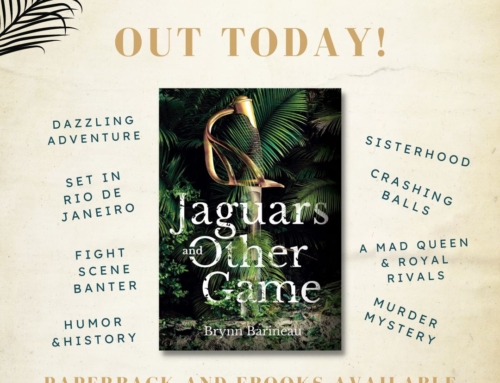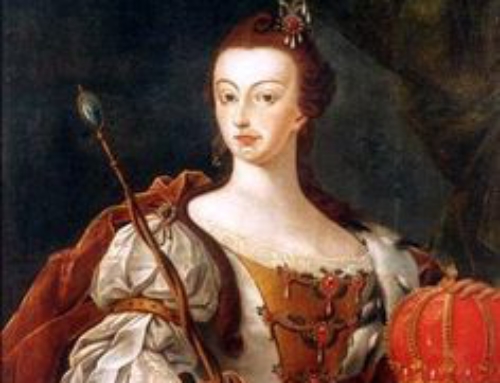 At the summer games this year in Rio de Janeiro, fans of 41 different sports will have a chance to watch competition between the best athletes in their sport. The world’s best judokas, golfers, divers, bmx cyclists, track cyclists, mountain cyclists (I had no idea there were so many different ways to cycle), trampoline jumpers, and fencers will be here in Brazil competing for gold. To be completely honest, I’m not sure what the modern pentathloners will be doing exactly, but I’m sure it’s something that I cannot.
At the summer games this year in Rio de Janeiro, fans of 41 different sports will have a chance to watch competition between the best athletes in their sport. The world’s best judokas, golfers, divers, bmx cyclists, track cyclists, mountain cyclists (I had no idea there were so many different ways to cycle), trampoline jumpers, and fencers will be here in Brazil competing for gold. To be completely honest, I’m not sure what the modern pentathloners will be doing exactly, but I’m sure it’s something that I cannot.
Despite the wide variety of sports included in the Olympics, one of the most popular sports in Brazil will not be a part of the games, Capoeira.
Capoeira is a martial art that developed in Brazil in the 16th century. At least scholars believe that’s when it began. There are very few records of the earliest iterations of capoeira because it was developed by Africans transported to Brazil as slaves who used it as a means of both self-defense and cultural preservation. For most of Brazil’s history capoeira was outlawed and practiced in secret. It wasn’t until the 1940s that all official bans on capoeira were lifted, and the government acknowledged capoeira as part of Brazil’s cultural heritage.
I called capoeira a martial art, but I used the term for lack of anything better. Some people refer to it as a dance, and others call it a game. It’s a link to history and a legacy. Capoeira is all of these.

“Negroes fighting, Brazil” c. 1824. Painting by Augustus Earle depicting an illegal capoeira-like game in Rio de Janeiro
The majority of people brought as slaves to Brazil came from West Africa, hence the style of capoeira known as Angola. Slaves were not allowed to continue cultural practices from home and could not practice any activity that could be used in self-defense. Capoeira combined drum rhythms and instruments from a variety of West African cultures and set the powerful spinning kicks and acrobatics to music. Practitioners could claim capoeira wasn’t an attack. It was a dance. Even today, capoeira is always practiced to music and song.
Capoeira expanded in Brazil during the 17th century through communities of escaped slaves known as quilombos. The largest quilombo, Palmares, was home to over 10,000 people. The quilombos were havens of freedom for former slaves and many mounted fierce resistance against the Portuguese. There are few remaining records about life in the quilombos, but historians believe that capoeira was an important part of the communities’ defense.
 Portuguese and later Brazilian officials were so frightened by capoeira they outlawed any and everything related to the game. People were arrested for playing capoeira instruments, wearing the colored belts and white pants, or just whistling a capoeira song. Finally, in the 1930’s Mestre Bimba from Salvador convinced the government that capoeira was both an important cultural legacy for Brazil and (because governments respond well to financial incentives) a tourist draw. In 1937, he was allowed to open the first public and officially sanctioned capoeira school in Brazil.
Portuguese and later Brazilian officials were so frightened by capoeira they outlawed any and everything related to the game. People were arrested for playing capoeira instruments, wearing the colored belts and white pants, or just whistling a capoeira song. Finally, in the 1930’s Mestre Bimba from Salvador convinced the government that capoeira was both an important cultural legacy for Brazil and (because governments respond well to financial incentives) a tourist draw. In 1937, he was allowed to open the first public and officially sanctioned capoeira school in Brazil.
Mestre Bimba developed a new style of capoeira drawing moves from jiu-jitsu, boxing, and batuque, a martial art brought from Africa practiced in the state of Bahia. Mestre Bimba’s style of capoeira became known as Regional. The original style of capoeira, Angola, is characterized by a slower style of play, with lots of low kicks, while the players stay close together. Mestre Bimba’s style of Regional is played much more quickly with more aerial acrobatics. If the capoeiristas you’re watching are doing crazy fast spin and flip kicks that make your mouth fall open, that’s Regional.
 While the styles vary in speed and types of movement, both keep the same format and traditions for practicing. Capoeira is always played inside a circle of musicians, singers, other players, and spectators. The music of capoeira is performed on five instruments: berimbau, pandeiro, atabaque, agogô, and reco-reco. The musicians and singer perform continuously as players tag in and out of the circle. One more important fact! Players never actually strike each other while playing. They feint and dodge and kick, but they never land a blow. That’s why the verb “play” is used for capoeira. They’re playing, not fighting.
While the styles vary in speed and types of movement, both keep the same format and traditions for practicing. Capoeira is always played inside a circle of musicians, singers, other players, and spectators. The music of capoeira is performed on five instruments: berimbau, pandeiro, atabaque, agogô, and reco-reco. The musicians and singer perform continuously as players tag in and out of the circle. One more important fact! Players never actually strike each other while playing. They feint and dodge and kick, but they never land a blow. That’s why the verb “play” is used for capoeira. They’re playing, not fighting.
Last year a petition went around Brazil lobbying for inclusion of capoeira in the Olympics. Many of the most famous mestres were and are against its inclusion. They argued that capoeira is not a sport. There are no winners and losers and to change that would be to change the nature of capoeira, which focuses on community, preserving heritage, fitness, and fun.
Whether a sport, a martial art or a dance, capoeira today is practiced by men and women, kids of all ages, from everywhere in the world. The petition for Olympic inclusion failed, which means no official capoeira exhibition at the 2016 Rio Games, but without doubt there will be opportunities for visitors to watch, whether on beach or in a park square. If you happen to be in Brazil for the Olympics or if you ever happen to hear the tang tang of a berimbau, do yourself a favor and go watch. You’ll get to see impressive athletics, hear great music, and learn a bit of Brazilian history all at the same time.
If you love the Olympics, learning about world cultures, or both, check out the amazing Multicultural Kids Blog!
Welcome to our Olympics for Kids series! The Olympics are a wonderful opportunity to teach kids about the world and explore cultures together.
Today, you can find more about other sports/games from various countries thanks to our participating bloggers:
Exploring Indonesian Badminton – Multicultural Kid Blogs
Popular Summer Sports in USSR – Creative World of Varya
Handball, France and the Olympics – Lou Messugo
Capoeira: a martial art with a great beat – Brynn in Brazil
The big 3: soccer, rugby, cricket – Globe Trottin’ Kids
Copa América: We Are the Champions – La clase de Sra. DuFault
Football in the Netherlands: The Men in Orange – Expat Life with a Double Buggy
Summer sports in Latvia – Let the Journey Begin
Valuable Lessons From The Olympic Sports to Kids – Hispanic Mama
Fencing with Ibtihaj Muhammad – Kid World Citizen
Puerto Rican Olympians – Discovering the World Through my Son’s Eyes
Don’t forget that you can also download our Summer Games Unit activity pack to learn more about the world and have fun during the Olympics.








[…] France and the Olympics – Lou Messugo Capoeira: a martial art with a great beat – Brynn in Brazil The big 3: soccer, rugby, cricket – Globe Trottin’ Kids Copa América: We Are the […]
[…] France and the Olympics – Lou Messugo Capoeira: a martial art with a great beat – Brynn in Brazil The big 3: soccer, rugby, cricket – Globe Trottin’ Kids Copa América: We Are the […]
[…] export. Capoeira is a Brazilian martial practiced to music and dance. I wrote a post explaining the history and practice of capoeira. For now, I’ll just say if you see a circle of people wearing white, singing and clapping, […]
[…] France and the Olympics – Lou Messugo Capoeira: a martial art with a great beat – Brynn in Brazil The big 3: soccer, rugby, cricket – Globe Trottin’ Kids Copa América: We Are the […]